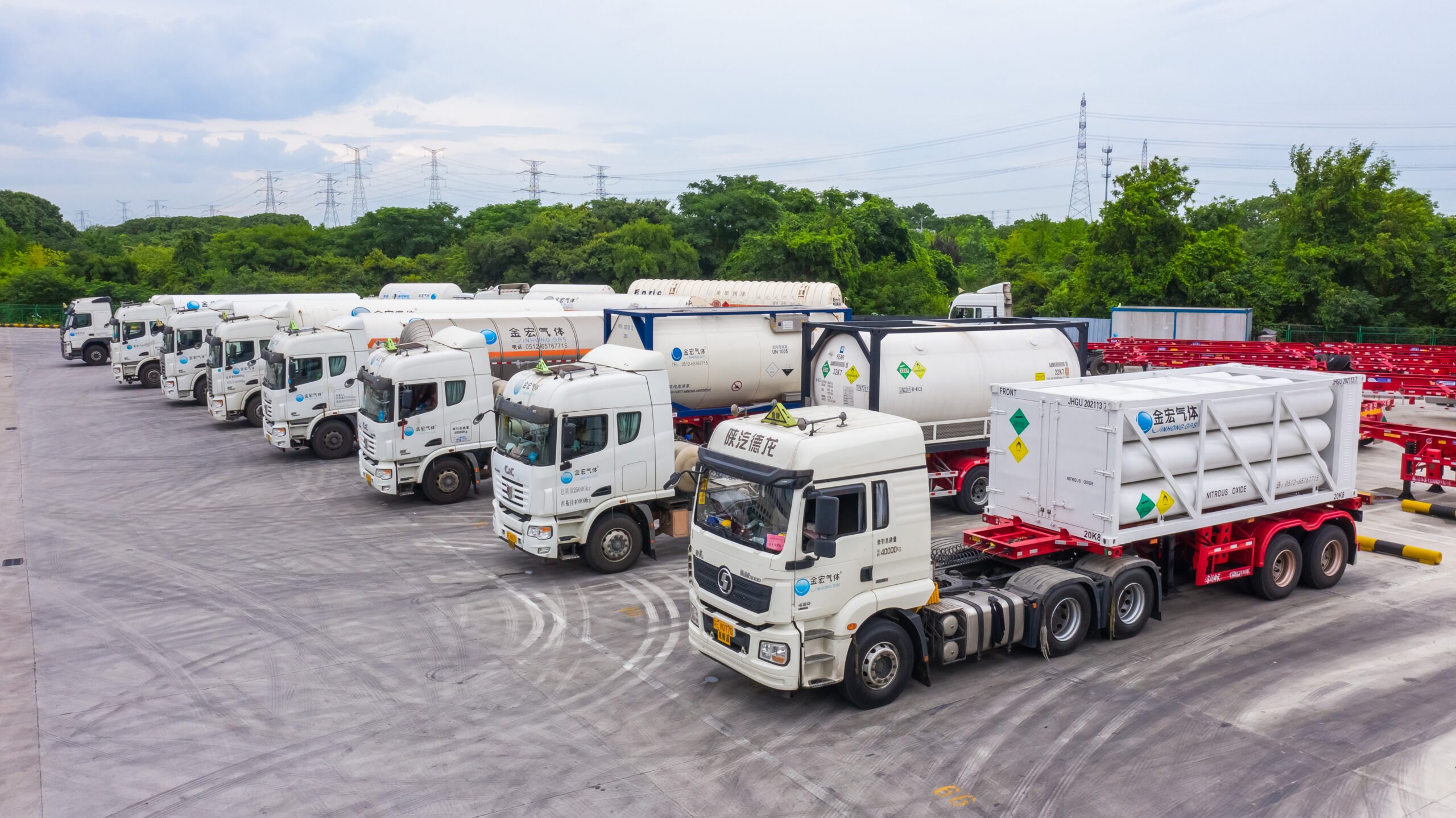Can Ethylene Be Oxidized?
Yes, it can.
Ethylene Oxide (EO) is produced through the catalytic oxidation of ethylene. It is a crucial intermediate in the production of ethylene glycol (used in polyester fiber and antifreeze) and various nonionic surfactants (raw materials for detergents).
Ethylene oxide is a highly hazardous and toxic organic chemical characterized by its flammability, explosiveness, toxicity, and carcinogenicity. Therefore, strict safety standards must be followed during its production, storage, transportation, and use.
1. Physical Properties
- Ethylene oxide is a colorless, transparent liquid at 4°C and becomes a colorless gas with an ether-like odor at room temperature.
- It has a density of 0.884 g/mL and a boiling point of 10.8°C.
- EO has a high vapor pressure (141 kPa at 30°C), which gives it strong penetration during fumigation sterilization.
- EO is miscible with water in any ratio and is also soluble in organic solvents and oils.
2. Chemical Properties
- EO is highly flammable, with an autoignition temperature of 180°C. When mixed with air in concentrations between 3%–80% (or 3%–100%), it forms an explosive mixture that can ignite or explode upon exposure to an open flame.
- EO is chemically active and can react violently with acids or alkalis, generating toxic gases or explosions. Waste gas treatment systems must prevent EO from reacting with nitrogen oxides or other organic materials to avoid explosions.
- Contact with catalysts can trigger rapid chemical reactions that accelerate with temperature, pressure, and moisture, producing viscous yellow materials that may clog pipelines and interfere with sterilization processes.

3. Major Hazards of Ethylene Oxide (EO)
a. Flammability and Explosiveness
EO vapor forms explosive mixtures with air over a wide range (3%–100%). It can burn or explode when exposed to heat or flames. Its autoignition point is 429°C. EO vapor is heavier than air and may spread to low-lying areas, causing flashback ignition if it encounters a fire source.
b. High Toxicity
EO is a central nervous system depressant, irritant, and cytotoxin. Short-term exposure to high concentrations can cause respiratory and eye irritation, headache, dizziness, nausea, vomiting, and in severe cases, muscle tremors, speech impairment, coma, or death.
Chronic exposure to low concentrations may cause neurasthenia and autonomic nervous dysfunction.
c. Carcinogenicity
The International Agency for Research on Cancer (IARC) classifies EO as a Group 1 human carcinogen. It is mutagenic and reproductive-toxic, potentially causing chromosomal abnormalities and damage to reproductive organs.
Recent studies also show that EO concentration in the blood correlates positively with neurofilament light chain levels, indicating neurotoxicity.
4. Safety Protection Measures
EO operations must be conducted in sealed environments with local exhaust ventilation.
Operators should wear positive-pressure self-contained breathing apparatus or full-face filter respirators, anti-static clothing, and rubber gloves.
No smoking or open flames are allowed in the workplace. Only explosion-proof equipment and ventilation systems should be used.
EO should be stored in a cool, ventilated area below 30°C, away from acids, alkalis, and alcohols.
According to Chinese regulations, the permissible exposure limit (PEL) for EO in workplace air is 2 mg/m³ (time-weighted average).
General and Special Safety Requirements
| Aspect | Safety Requirement |
| Training | Operators must receive professional safety training and emergency response instruction. |
| Equipment | Use explosion-proof ventilation, leak detection alarms, and double sets of heavy protective suits. |
| Operational Control | No hot work or spark-generating activities near EO equipment. Monitor concentration regularly. |
| Maintenance | Before hot work, purge systems with nitrogen (≥98% purity). |
| Storage Conditions | Keep at –10°C to 20°C, install water-cooling and spray systems, use PTFE gaskets, and maintain anti-static protection. |
| Transportation | Use stainless steel tankers with flame arresters and nitrogen blanketing (≥99.9% purity). Cylinders must be secured properly and handled gently. |
| Emergency Equipment | Provide appropriate fire extinguishers (foam, CO₂, dry powder) and leakage response kits. |
Emergency Response and First Aid
| Scenario | Response |
| Inhalation | Move to fresh air immediately. Provide oxygen if breathing is difficult. Perform CPR if necessary. |
| Skin Contact | Remove contaminated clothing. Rinse with running water for at least 15 minutes. Seek medical care. |
| Eye Contact | Flush with clean water or saline for 15 minutes. Get medical assistance. |
| Firefighting | Stop gas source if possible. Do not extinguish flame at leak source. Use water mist, CO₂, foam, or dry powder. Cool containers with water. |
| Leakage | Eliminate all ignition sources, isolate the area, and evacuate personnel upwind. Do not use water directly on leaks. Minor leak: isolate 30 m, evacuate 100–200 m; major leak: isolate 150 m, evacuate 800–2500 m. |
5.About Jinhong Gas
Jinhong Gas is one of China’s leading industrial gas suppliers, specializing in high-purity gases, specialty gases, and bulk gases for diverse industries, including chemicals, semiconductors, electronics, medical sterilization, and advanced manufacturing.
With a strong focus on safety, precision, and reliability, Jinhong Gas provides professional support for the handling, transportation, and application of hazardous gases like ethylene oxide (EO).
Our facilities adopt international-standard monitoring, purification, and safety control systems, ensuring compliance with both domestic and global safety requirements.
Jinhong Gas is dedicated to delivering sustainable, efficient, and customized gas solutions—helping clients reduce operational risks while maintaining high production standards.


